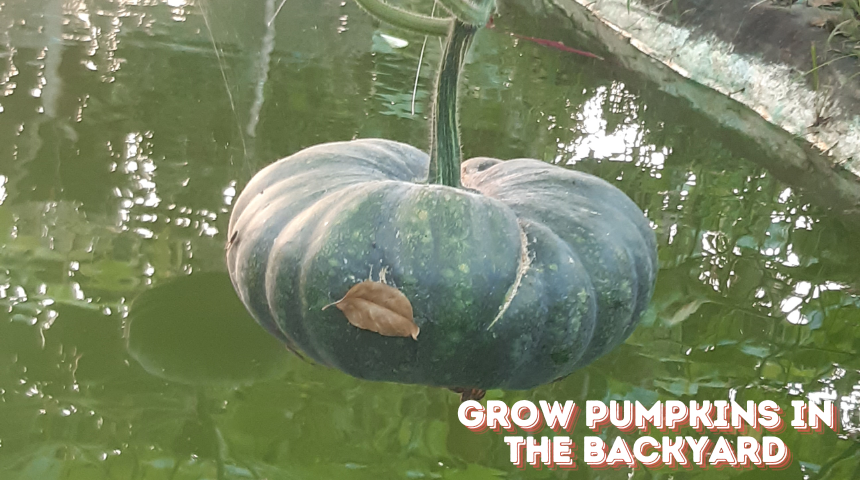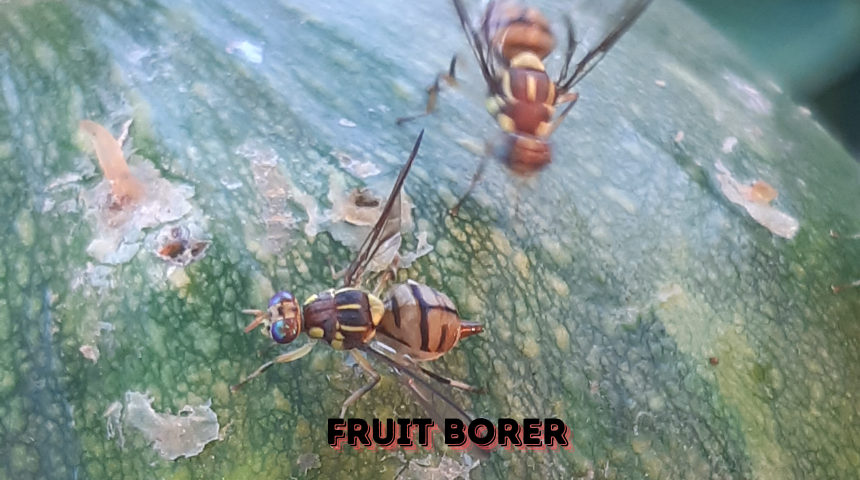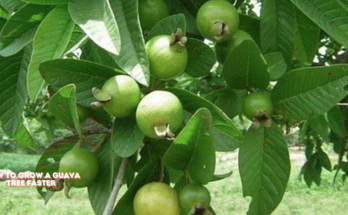Welcome to my backyard oasis! Discover the secrets of cultivating pumpkins at home. As your gardening companion, I’ll guide you through the art of nurturing these vibrant autumn treasures.
Sweet pumpkin contains a lot of vitamin A. It can be eaten raw and ripe. Bu t its main use is when ripe. Pumpkin leaves and tips can be eaten.
Unleash your green thumb and embark on a journey to witness the magic of growing homegrown pumpkins. From selecting the right seeds to crafting a nurturing environment, join me in creating a pumpkin haven right outside your door.
Embrace the joy of harvesting your very own backyard pumpkins – a rewarding adventure for any gardening enthusiast.
Let’s dive into the essentials, demystify the process, and savor the satisfaction of growing lush, plump pumpkins in your little haven. Ready to turn your backyard into a pumpkin paradise? Let’s get started!
How to grow pumpkins in the backyard?
I’m the gardening enthusiast behind this blog, and growing pumpkins in your backyard is simpler than you think. Start with quality seeds; choose a sunny spot for planting.
Make sure the soil is well-draining and rich in nutrients. Plant the seeds about an inch deep, spaced apart. Water consistently, keeping the soil moist but not waterlogged.
Support your growing pumpkins with a layer of mulch to retain moisture. As they sprout, they thin out weaker seedlings, allowing the strongest to thrive. Provide sturdy support for vines as they expand.
Fertilize every two weeks with a balanced solution. Keep an eye out for pests; apply natural remedies if needed. Harvest when the skin hardens, leaving a few inches of stem. Enjoy your homegrown backyard pumpkins—a rewarding journey awaits!

Cultivation Time
Pumpkin can be grown almost all year round. Pumpkins’ versatile fruits belong to the gourd family and offer a spectrum of culinary possibilities.
With their rich orange hue and earthy sweetness, pumpkins grace our tables in pies, soups, and savory dishes. Beyond the kitchen, they thrive in backyard gardens, adding a touch of seasonal charm.
Pumpkins are resilient, easy to grow, and hold cultural significance worldwide.
Seed Bed Preparation And Fertilizer Application
Pits of 80-100 cubic centimeters should be made for the mother, usually at a distance of 3-4 meters. 5 kg of dung or compost, 130 g of urea, 200 g of TSP, 150 g of MOP, 90 g of gypsum, and 5 g of zinc fertilizer should be given in each hole.
Fertilizers other than urea 8-10 days before sowing.
When to Plant Pumpkins?
The ideal time to plant pumpkins depends on your local climate and the specific variety you choose.
Pumpkins thrive in warm weather, so it’s essential to wait until the threat of frost has passed. Generally, aim to plant pumpkins outdoors after the soil has warmed up and there is no longer a risk of frost.
Check the seed packet for information on the number of days to maturity. This will help you determine the best time to plant based on your region’s average first and last frost dates.

Pumpkins can take anywhere from 90 to 120 days to mature, depending on the variety. In colder climates, consider starting pumpkin seeds indoors about three weeks before the last expected frost date.
This allows you to give the seeds a head start and transplant healthy seedlings into the garden once the weather is consistently warm.
How to Plant Pumpkins?
Planting pumpkins is a straightforward process that begins with choosing the right time and location. Wait until the danger of frost has passed, typically planting after the soil warms up in spring.
Select a sunny spot with well-drained soil, providing ample space for the sprawling vines. If you’re limited on space, opt for compact varieties.
Start seeds indoors about three weeks before the last expected frost, ensuring a head start for the seedlings. Transplant the young, sturdy plants into the garden, leaving sufficient space for growth.
The Best 10 Easiest Ways To Grow Pumpkins In The Backyard.
1. Choose the Perfect Pumpkin Variety
Selecting the right pumpkin variety is the first step to a successful harvest. If you love the classic Halloween carving tradition, ‘Jack O’Lantern’ is a reliable choice with its sturdy structure.
For a touch of elegance in your backyard, consider ‘Cinderella’ pumpkins, known for their flattened shape and vibrant color.
Assess your space, purpose, and personal preferences to make an informed decision that aligns with your gardening goals.
2. Prepare the Right Soil
Healthy soil is the foundation for robust pumpkin growth. Ensure your backyard soil is well-draining to prevent waterlogging, a common issue for pumpkins.
Enrich the soil by incorporating generous amounts of compost. Compost not only enhances nutrient content but also improves soil structure, promoting optimal moisture retention.
A nutrient-rich foundation sets the stage for thriving pumpkin plants.
3. Plant at the Right Time
Timing is crucial when it comes to planting pumpkins. Wait until after the last frost has passed to avoid any potential damage to delicate seedlings.
Planting too early can expose young plants to chilly temperatures. Research your local climate and frost dates to determine the ideal window for planting, giving your pumpkin seeds the best chance for successful germination.
4. Provide Full Sun Exposure
Pumpkins are sun lovers, and a sunny spot is essential for their growth. Choose a location in your backyard that receives a minimum of 6-8 hours of direct sunlight daily.
Sunlight not only fuels photosynthesis but also helps in maintaining plant health and warding off diseases. A well-exposed area ensures your pumpkins receive the light they need for robust development.
5. Optimal Spacing for Vines
Proper spacing is a key factor in maximizing pumpkin growth. Allow sufficient room between plants to avoid overcrowding, which can lead to competition for nutrients and sunlight.
For compact varieties or limited space, consider planting in containers or raised beds. This strategic spacing ensures each plant has the space it needs to thrive and produce healthy pumpkins.
6. Implement Strategic Pruning
Pruning is a valuable tool in managing the size and health of your pumpkin plants. Remove excess vines, especially those that do not contribute to the main growth or fruit development.
This directs the plant’s energy to the essential parts, promoting larger and healthier pumpkins. Focus on maintaining a balance between foliage and fruit for optimal results.
7. Regular Watering Routine
Consistent watering is essential for healthy pumpkin growth. Keep the soil consistently moist but not waterlogged.
Pumpkins require more water during hot and dry periods, so monitor the soil moisture and adjust your watering routine accordingly.
Avoid sudden fluctuations in soil moisture to prevent issues like blossom end rot and ensure a steady supply of water for your plants.
8. Nutrient-Rich Fertilization
Pumpkins are heavy feeders, and providing them with the right nutrients is crucial for substantial fruit development.
Choose a balanced fertilizer with a higher concentration of potassium and phosphorus, essential for flowering and fruiting.
Follow the recommended application rates to avoid over-fertilizing, which can lead to imbalances and negatively impact plant health.
9. Protect Against Pests and Diseases
Among the various pests of pumpkin plants, red bugs, jack bugs and fruit flies are notable. Sevin diazinon can be applied to control this pest.
Powdery mildew, downy mildew and anthracnose are the major vegetable diseases. Diathen M-45 should be applied after 2 weeks.
Vigilance is key when it comes to pest and disease management. Keep a close eye on your pumpkin plants for signs of cucumber beetles, powdery mildew, or other common issues.

Utilize natural remedies such as neem oil or companion planting to deter pests. Regular inspections help identify problems early, allowing for timely intervention and preserving the health of your pumpkin crop.
10. Harvest at the Right Time
Sweet pumpkin can be eaten from the young stage to the ripe stage. Therefore, harvesting starts from the young stage. Pumpkins can be stored for many days if they are collected when they are ripe.
The culmination of your efforts comes when it’s time to harvest your pumpkins. Wait until the pumpkins reach maturity, usually indicated by hard skin and consistent color.
Leave a few inches of stem attached to each pumpkin to prolong its shelf life. Harvesting at the right time ensures optimal flavor and texture.
Enjoy the fruits of your labor as you bring homegrown pumpkins from your backyard to your table.
How Long Does Pumpkin Take To Grow?
The time it takes for a pumpkin to grow varies depending on the specific variety and environmental conditions. On average, most pumpkin varieties take around 90 to 120 days from planting to harvest.
This timeframe begins from the moment the seeds are sown or the seedlings are transplanted into the soil. Factors such as temperature, sunlight, soil quality, and proper care can influence the growth rate.
Early varieties may mature in as little as 75 days, while larger pumpkins might require a longer growing season.
How and When to Plant Pumpkins for Halloween?
Planting pumpkins for Halloween requires strategic timing and care. Here’s a concise guide to ensure you have vibrant pumpkins ready for the spooky season:
1. Choose the Right Pumpkin Variety
Select a pumpkin variety suitable for carving, such as ‘Jack O’Lantern.’ Ensure it has a relatively short maturity period to align with Halloween. Check the seed packet for information on days to maturity.
2. Timing is Crucial
Plan your pumpkin planting to coincide with Halloween, which falls on October 31st. Work backward from this date, considering the average days to maturity for your chosen pumpkin variety.
This ensures your pumpkins are ready for carving and decorating.
3. Start Indoors or Direct Sow
Depending on your local climate, start pumpkin seeds indoors about 3-4 weeks before the last expected frost date. Alternatively, directly sow seeds outdoors after the danger of frost has passed.
Starting indoors provides a head start for regions with shorter growing seasons.
4. Optimal Soil and Sun
Choose a well-draining, nutrient-rich soil for planting. Pumpkins thrive in full sun, so select a sunny location in your garden that receives at least 6-8 hours of direct sunlight daily.
5. Planting Technique
Plant pumpkin seeds about 1 inch deep in hills or mounds, leaving ample space between plants. If starting indoors, transplant seedlings carefully into the prepared garden soil after the last frost.
6. Adequate Spacing
Pumpkins need room to spread, so ensure proper spacing between hills or mounds. This minimizes competition for nutrients and sunlight, allowing each plant to flourish.
7. Consistent Watering
Maintain consistent soil moisture by watering regularly. Especially during dry periods, ensure the soil stays consistently moist but not waterlogged. Adequate hydration supports healthy pumpkin development.
8. Fertilize Appropriately
Apply a balanced fertilizer to the soil, considering the nutrient needs of pumpkins. Follow recommended application rates and timing to provide essential nutrients for robust growth.
9. Watch for Pests
Keep an eye out for common pumpkin pests, such as cucumber beetles. Implement natural remedies or use protective covers to shield young plants from potential infestations.
10. Harvest in Time for Halloween
Monitor your pumpkins as they grow. Harvest them when the skin becomes hard, typically a few weeks before Halloween, leaving a few inches of stem attached for durability.

Your homegrown pumpkins will be ready for carving and creating festive decorations just in time for Halloween night.
When is the best time to plant pumpkins in my backyard?
Plant pumpkins after the last frost when the soil has warmed up, usually in spring.
How much sunlight do pumpkins need?
Pumpkins thrive in full sunlight, so ensure they get 6-8 hours of direct sun daily.
How often should I water my pumpkin plants?
Water regularly to keep the soil consistently moist, especially during dry periods.
How do I know when to harvest my pumpkins?
Harvest pumpkins when the skin is hard, the color is consistent, and leave a few inches of stem attached for longevity.
Conclusion
Growing pumpkins in your backyard is a delightful journey filled with vibrant hues and rewarding harvests.
With the right variety selection, strategic planting, and a touch of TLC, your garden can transform into a pumpkin haven. Remember to embrace the sun, nurture the soil, and protect against pesky invaders.
As your pumpkin patch flourishes, revel in the joy of cultivating your very own autumn treasures. Here’s to the beauty of homegrown pumpkins, turning your backyard into a seasonal masterpiece!



